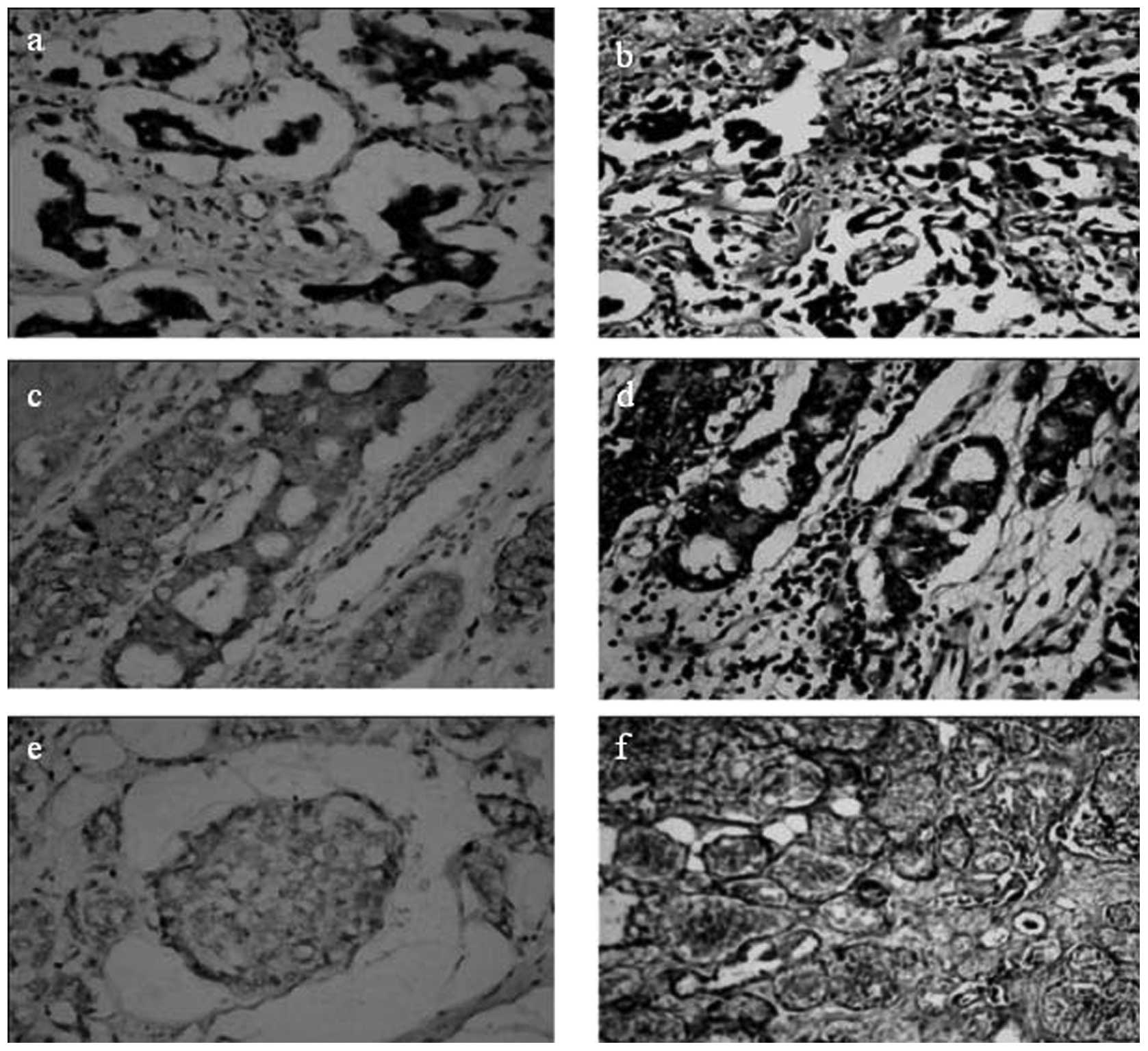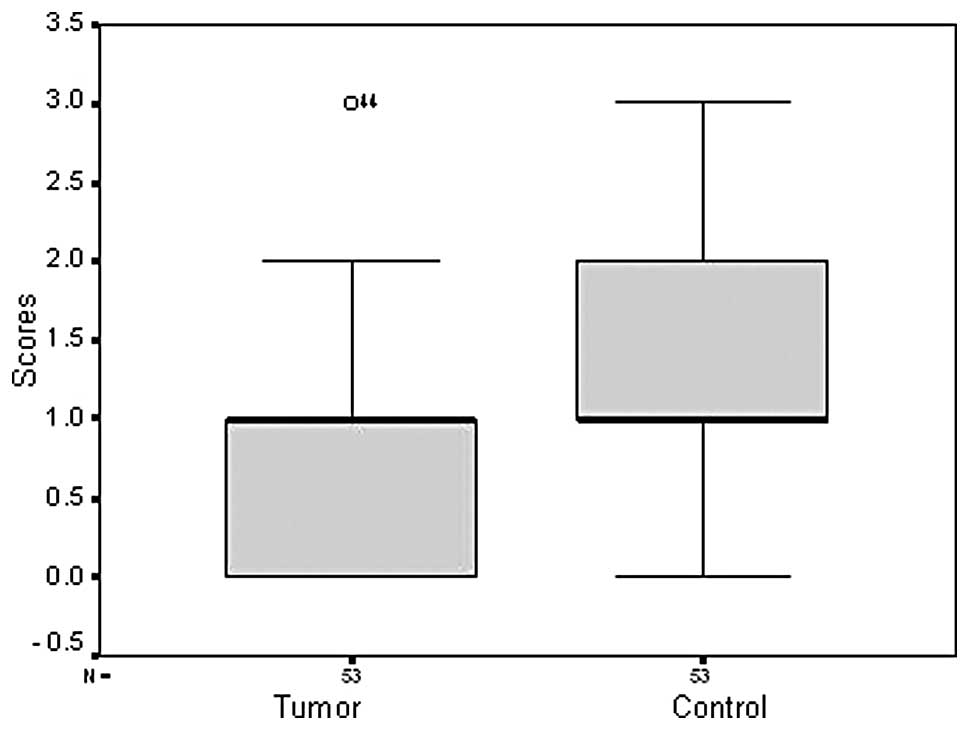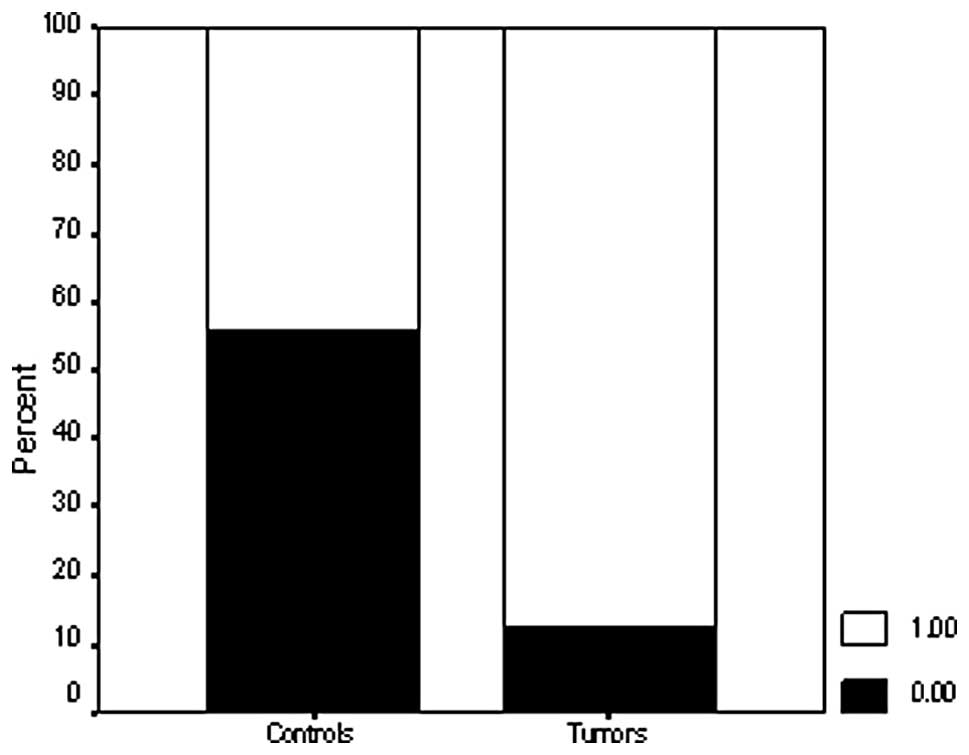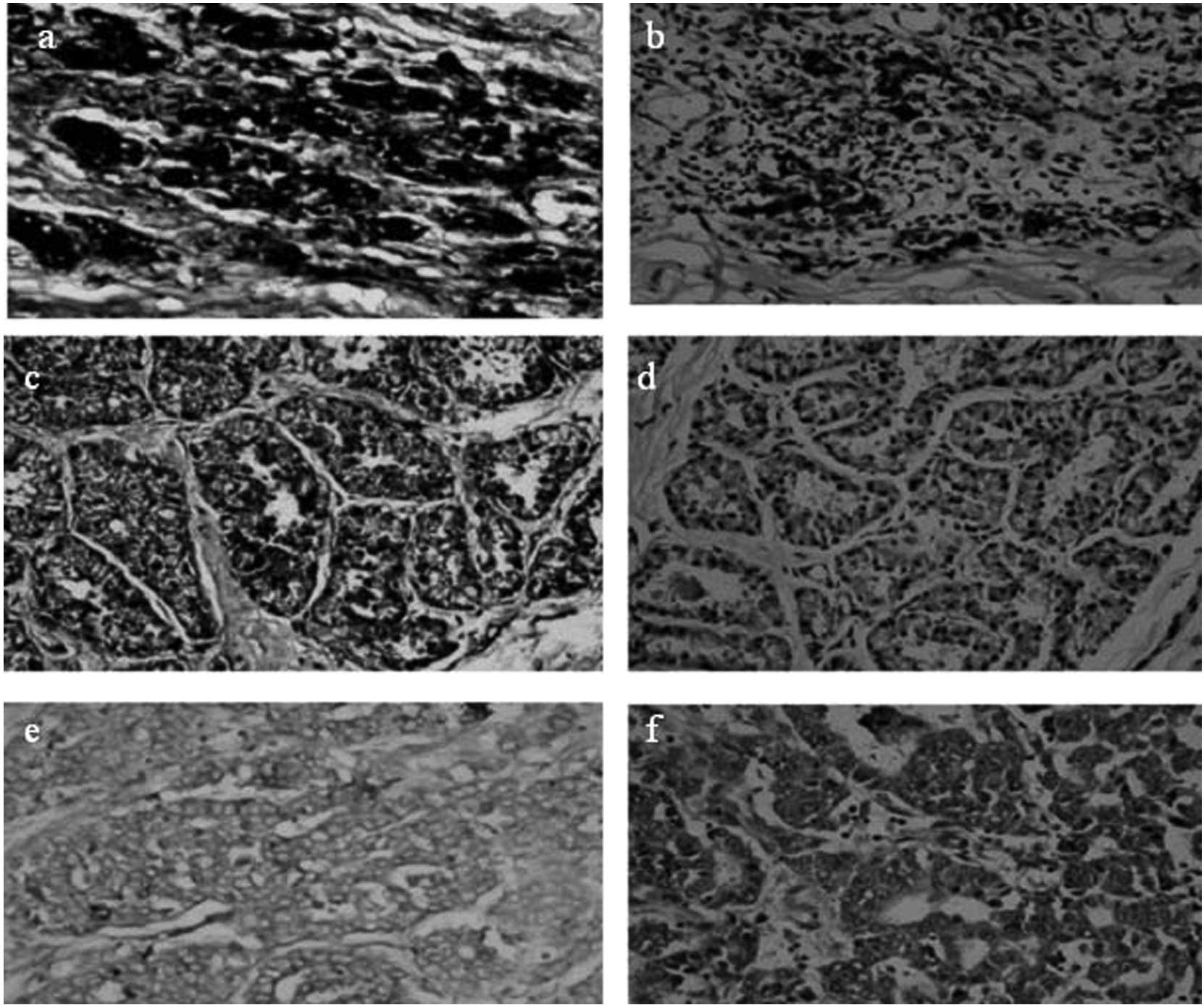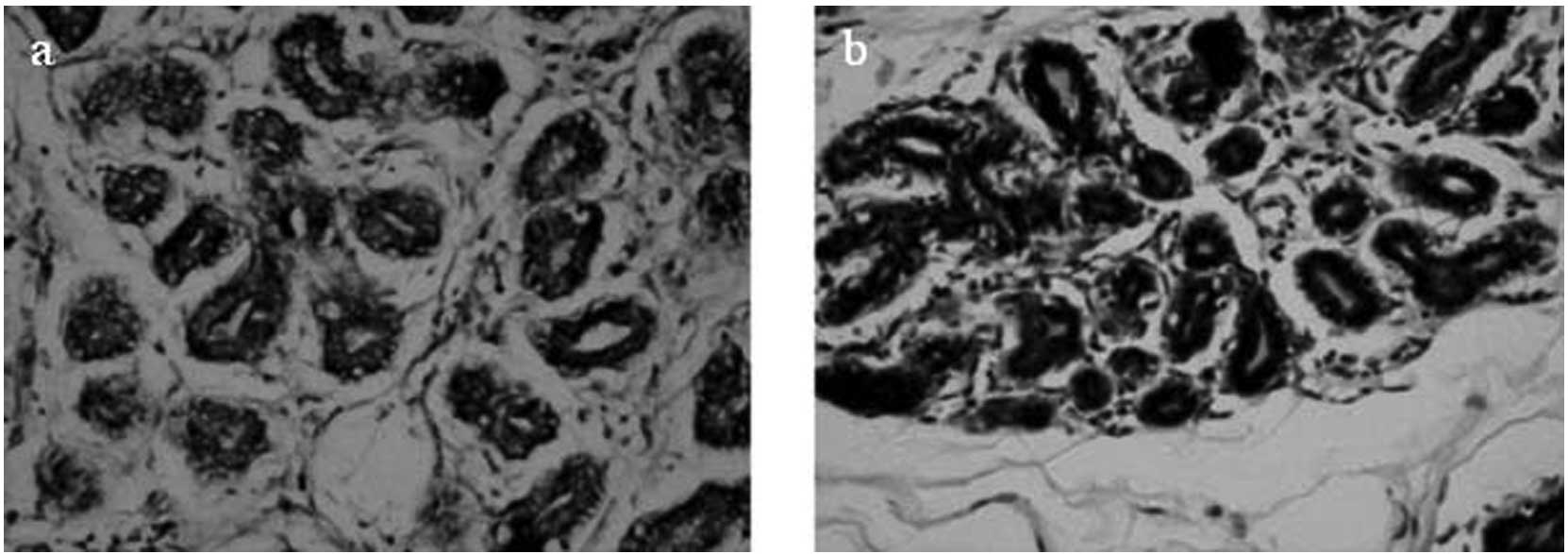|
1.
|
Greenberg JT and Demple B: Overproduction
of peroxide-scavenging enzymes in Escherichia colisuppresses
spontaneous mutagenesis and sensitivity to redox-cycling agents in
oxyR-mutants. Embo J. 7:2611–2617. 1988.PubMed/NCBI
|
|
2.
|
Dietz KJ: The dual function of plant
peroxiredoxins in antioxidant defence and redox signaling. Subcell
Biochem. 44:267–294. 2007. View Article : Google Scholar : PubMed/NCBI
|
|
3.
|
Zhang B, Wang Y and Su Y: Peroxiredoxins,
a novel target in cancer radiotherapy. Cancer Lett. 286:154–160.
2009. View Article : Google Scholar : PubMed/NCBI
|
|
4.
|
Noh DY, Ahn SJ, Lee RA, Kim SW, Park IA
and Chae HZ: Overexpression of peroxiredoxin in human breast
cancer. Anticancer Res. 21:2085–2090. 2001.PubMed/NCBI
|
|
5.
|
Karihtala P, Mantyniemi A, Kang SW,
Kinnula VL and Soini Y: Peroxiredoxins in breast carcinoma. Clin
Cancer Res. 9:3418–3424. 2003.PubMed/NCBI
|
|
6.
|
Neumann CA, Krause DS, Carman CV, Das S,
Dubey DP, Abraham JL, Bronson RT, Fujiwara Y, Orkin SH and Van
Etten RA: Essential role for the peroxiredoxin Prdx1 in erythrocyte
antioxidant defence and tumour suppression. Nature. 424:561–565.
2003. View Article : Google Scholar : PubMed/NCBI
|
|
7.
|
Lee TH, Kim SU, Yu SL, Kim SH, Park DS,
Moon HB, Dho SH, Kwon KS, Kwon HJ, Han YH, et al: Peroxiredoxin II
is essential for sustaining life span of erythrocytes in mice.
Blood. 101:5033–5038. 2003. View Article : Google Scholar : PubMed/NCBI
|
|
8.
|
Wang X, Phelan SA, Forsman-Semb K, Taylor
EF, Petros C, Brown A, Lerner CP and Paigen B: Mice with targeted
mutation of peroxiredoxin 6 develop normally but are susceptible to
oxidative stress. J Biol Chem. 278:25179–25190. 2003. View Article : Google Scholar : PubMed/NCBI
|
|
9.
|
De Simoni S, Goemaere J and Knoops B:
Silencing of peroxiredoxin 3 and peroxiredoxin 5 reveals the role
of mitochondrial peroxiredoxins in the protection of human
neuroblastoma SH-SY5Y cells toward MPP+. Neurosci Lett.
433:219–224. 2008.PubMed/NCBI
|
|
10.
|
Seo MS, Kang SW, Kim K, Baines IC, Lee TH
and Rhee SG: Identification of a new type of mammalian
peroxiredoxin that forms an intramolecular disulfide as a reaction
intermediate. J Biol Chem. 275:20346–20354. 2000. View Article : Google Scholar : PubMed/NCBI
|
|
11.
|
Kropotov AV, Grudinkin PS, Pleskach NM,
Gavrilov BA, Tomilin NV and Zhivotovsky B: Downregulation of
peroxiredoxin V stimulates formation of etoposide-induced
double-strand DNA breaks. FEBS Lett. 572:75–79. 2004. View Article : Google Scholar : PubMed/NCBI
|
|
12.
|
Sambrook J, Fritsch EF and Maniatis T:
Molecular Cloning: A Laboratory Manual. Cold Spring Harbor
Laboratory Press; New York: pp. 1989
|
|
13.
|
Breitschopf H, Suchanek G, Gould RM,
Colman DR and Lassmann H: In situ hybridization with
digoxigenin-labeled probes: sensitive and reliable detection method
applied to myelinating rat brain. Acta Neuropathol. 84:581–587.
1992. View Article : Google Scholar
|
|
14.
|
Cha MK, Suh KH and Kim IH: Overexpression
of peroxiredoxin I and thioredoxin1 in human breast carcinoma. J
Exp Clin Cancer Res. 28:932009. View Article : Google Scholar : PubMed/NCBI
|
|
15.
|
Immenschuh S and Baumgart-Vogt E:
Peroxiredoxins, oxidative stress, and cell proliferation. Antioxid
Redox Signal. 7:768–777. 2005. View Article : Google Scholar : PubMed/NCBI
|
|
16.
|
Chang TS, Jeong W, Choi SY, Yu S, Kang SW
and Rhee SG: Regulation of peroxiredoxin I activity by
Cdc2-mediated phosphorylation. J Biol Chem. 277:25370–25376. 2002.
View Article : Google Scholar : PubMed/NCBI
|
|
17.
|
Wagner E, Luche S, Penna L, Chevallet M,
Van Dorsselaer A, Leize-Wagner E and Rabilloud T: A method for
detection of overoxidation of cysteines: peroxiredoxins are
oxidized in vivo at the active-site cysteine during oxidative
stress. Biochem J. 366:777–785. 2002.PubMed/NCBI
|
|
18.
|
Lehtonen S: Localization and regulation of
peroxiredoxins in human lung and lung diseases. Oulun Yliopisto;
Oulu: 2005
|
|
19.
|
Moll R, Mitze M, Frixen UH and Birchmeier
W: Differential loss of E-cadherin expression in infiltrating
ductal and lobular breast carcinomas. Am J Pathol. 143:1731–1742.
1993.PubMed/NCBI
|
|
20.
|
Vos CB, Cleton-Jansen AM, Berx G, de Leeuw
WJ, ter Haar NT, van Roy F, Cornelisse CJ, Peterse JL and van de
Vijver MJ: E-cadherin inactivation in lobular carcinoma in situ of
the breast: an early event in tumorigenesis. Br J Cancer.
76:1131–1133. 1997. View Article : Google Scholar : PubMed/NCBI
|
|
21.
|
Gown AM: Genogenic immunohistochemistry: a
new era in diagnostic immunohistochemistry. Curr Diagn Pathol.
8:193–200. 2002. View Article : Google Scholar
|
|
22.
|
Wood ZA, Poole LB and Karplus PA:
Peroxiredoxin evolution and the regulation of hydrogen peroxide
signaling. Science. 300:650–653. 2003. View Article : Google Scholar : PubMed/NCBI
|
|
23.
|
Rhee SG, Jeong W, Chang TS and Woo HA:
Sulfiredoxin, the cysteine sulfinic acid reductase specific to
2-Cys peroxiredoxin: its discovery, mechanism of action, and
biological significance. Kidney Int Suppl. 106:S3–S8. 2007.
View Article : Google Scholar : PubMed/NCBI
|
|
24.
|
Zhou Y, Kok KH, Chun AC, Wong CM, Wu HW,
Lin MC, Fung PC, Kung H and Jin DY: Mouse peroxiredoxin V is a
thioredoxin peroxidase that inhibits p53-induced apoptosis. Biochem
Biophys Res Commun. 268:921–927. 2000. View Article : Google Scholar : PubMed/NCBI
|
|
25.
|
Banmeyer I, Marchand C, Verhaeghe C, Vucic
B, Rees JF and Knoops B: Overexpression of human peroxiredoxin 5 in
subcellular compartments of Chinese hamster ovary cells: effects on
cytotoxicity and DNA damage caused by peroxides. Free Radic Biol
Med. 36:65–77. 2004. View Article : Google Scholar : PubMed/NCBI
|
|
26.
|
Kropotov A, Serikov V, Suh J, Smirnova A,
Bashkirov V, Zhivotovsky B and Tomilin N: Constitutive expression
of the human peroxiredoxin V gene contributes to protection of the
genome from oxidative DNA lesions and to suppression of
transcription of noncoding DNA. FEBS J. 273:2607–2617. 2006.
View Article : Google Scholar : PubMed/NCBI
|
|
27.
|
Awadelkarim KD, Arizzi C, Elamin EO, Hamad
HM, De Blasio P, Mekki SO, Osman I, Biunno I, Elwali NE,
Mariani-Costantini R, et al: Pathological, clinical and prognostic
characteristics of breast cancer in Central Sudan versus Northern
Italy: implications for breast cancer in Africa. Histopathology.
52:445–456. 2008. View Article : Google Scholar : PubMed/NCBI
|
|
28.
|
Elgaili EM, Abuidris DO, Rahman M,
Michalek AM and Mohammed SI: Breast cancer burden in central Sudan.
Int J Womens Health. 2:77–82. 2010.
|
|
29.
|
Khaled HM: Breast cancer at diagnosis in
women of Africa and the Middle East. Breast Cancer in Women of
African Descent. Williams CKO, Olopade OI and Falkson CI: Springer;
Dordrecht, The Netherlands: pp. 1975–2004. 2006
|
|
30.
|
Dressler LG, Berry DA, Broadwater G, Cowan
D, Cox K, Griffin S, Miller A, Tse J, Novotny D, Persons DL, et al:
Comparison of HER2 status by fluorescence in situ hybridization and
immunohistochemistry to predict benefit from dose escalation of
adjuvant doxorubicin-based therapy in node-positive breast cancer
patients. J Clin Oncol. 23:4287–4297. 2005. View Article : Google Scholar : PubMed/NCBI
|
|
31.
|
Carlson RW and Stockdale FE: The clinical
biology of breast cancer. Annu Rev Med. 39:453–464. 1988.
View Article : Google Scholar : PubMed/NCBI
|
|
32.
|
Ijaduola TG and Smith EB: Pattern of
breast cancer among white-American, African-American, and
nonimmigrant west-African women. J Natl Med Assoc. 90:547–551.
1998.PubMed/NCBI
|
|
33.
|
Masri MA, Abdel Seed NM, Fahal AH, Romano
M, Baralle F, El Hassam AM and Ibrahim ME: Minor role for BRCA2
(exon11) and p53 (exon 5–9) among Sudanese breast cancer patients.
Breast Cancer Res Treat. 71:145–147. 2002.PubMed/NCBI
|
|
34.
|
Awadelkarim KD, Aceto G, Veschi S, Elhaj
A, Morgano A, Mohamedani AA, Eltayeb EA, Abuidris D, Di Gioacchino
M, Battista P, et al: BRCA1 and BRCA2 status in a Central Sudanese
series of breast cancer patients: interactions with genetic, ethnic
and reproductive factors. Breast Cancer Res Treat. 102:189–199.
2007. View Article : Google Scholar : PubMed/NCBI
|
|
35.
|
Mahfoudh W, Bouaouina N, Ahmed SB, Gabbouj
S, Shan J, Mathew R, Uhrhammer N, Bignon YJ, Troudi W, Elgaaied AB,
et al: Hereditary breast cancer in Middle Eastern and North African
(MENA) populations: identification of novel, recurrent and founder
BRCA1 mutations in the Tunisian population. Mol Biol Rep.
39:1037–1046. 2012. View Article : Google Scholar : PubMed/NCBI
|
|
36.
|
Singh AK, Pandey A, Tewari M, Shukla HS
and Pandey HP: Epigenetic silencing of BRCA1 gene associated with
demographic and pathologic factors in sporadic breast cancer: a
study of an Indian population. Eur J Cancer Prev. 20:478–483. 2011.
View Article : Google Scholar : PubMed/NCBI
|
|
37.
|
Konecny M, Milly M, Zavodna K, Weismanova
E, Gregorova J, Mlkva I, Ilencikova D, Kausitz J and Bartosova Z:
Comprehensive genetic characterization of hereditary breast/ovarian
cancer families from Slovakia. Breast Cancer Res Treat.
126:119–130. 2011. View Article : Google Scholar : PubMed/NCBI
|
|
38.
|
Zhu K, Hunter S, Payne-Wilks K, Sutcliffe
C, Bentley C, Roland CL and Williams SM: Potential differences in
breast cancer risk factors based on CYP1A1 MspI and
African-American-specific genotypes. Ethn Dis. 16:207–215.
2006.PubMed/NCBI
|



